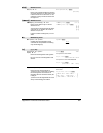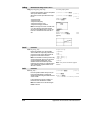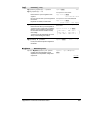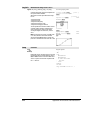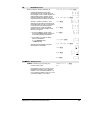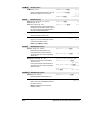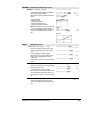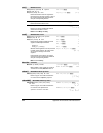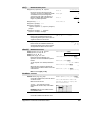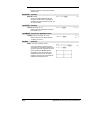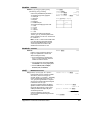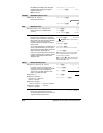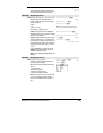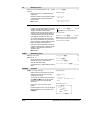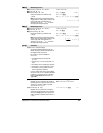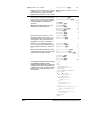
Appendix A: Functions and Instructions 845
nCr() MATH/Probability menu
nCr(
expression1
,
expression2
) ⇒
⇒⇒
⇒
expression
For integer
expression1
and
expression2
with
expression1
‚
expression2
‚ 0, nCr() is the number
of combinations of
expression1
things taken
expression2
at a time. (This is also known as a
binomial coefficient.) Both arguments can be
integers or symbolic expressions.
nCr(
expression,
0) ⇒ 1
nCr(
expression, negInteger
) ⇒ 0
nCr(
expression, posInteger
) ⇒
expressionø
(
expression
ì 1)
...
(
expressionì posInteger
+1)/
posInteger
!
nCr(
expression, nonInteger
) ⇒
expression
!/
((
expressionì nonInteger
)!
ø nonInteger
!)
nCr(z,3)
z
ø (zì2)ø(zì1)
6
ans(1)|z=5 10
nCr(z,c)
z!
c!(z
ì c)!
ans(1)/nPr(z,c)
1
c!
nCr(
list1
,
list2
) ⇒
⇒⇒
⇒
list
Returns a list of combinations based on the
corresponding element pairs in the two lists. The
arguments must be the same size list.
nCr({5,4,3},{2,4,2}) ¸
{10 1 3}
nCr(
matrix1
,
matrix2
) ⇒
⇒⇒
⇒
matrix
Returns a matrix of combinations based on the
corresponding element pairs in the two matrices.
The arguments must be the same size matrix.
nCr([6,5;4,3],[2,2;2,2]) ¸
[
15 10
6 3
]
nDeriv() MATH/Calculus menu
nDeriv(
expression1
,
var
[,
h
]) ⇒
⇒⇒
⇒
expression
nDeriv(
expression1
,
var, list
) ⇒
⇒⇒
⇒
list
nDeriv(
list
,
var
[,
h
]) ⇒
⇒⇒
⇒
list
nDeriv(
matrix
,
var
[,
h
]) ⇒
⇒⇒
⇒
matrix
Returns the numerical derivative as an
expression. Uses the central difference quotient
formula.
h
is the step value. If
h
is omitted, it defaults to
0.001.
When using
list
or
matrix
, the operation gets
mapped across the values in the list or across the
matrix elements.
Note: See also
avgRC() and
d
().
nDeriv(cos(x),x,h) ¸
limit(nDeriv(cos(x),x,h),h,0)
¸
ë sin(x)
nDeriv(x^3,x,0.01)
¸
3.
ø (xñ+.000033)
nDeriv(cos(x),x)|x=
p/2 ¸
ë 1.
nDeriv(x^2,x,{.01,.1})
¸
{2.
ø x 2.øx}
NewData CATALOG
NewData
dataVar
,
list1
[,
list2
] [,
list3
]...
Creates data variable
dataVar,
where the columns
are the lists in order.
Must have at least one list.
list1
,
list2
, ...,
listn
can be lists as shown,
expressions that resolve to lists, or list variable
names.
NewData makes the new variable current in
the Data/Matrix Editor.
NewData mydata,{1,2,3},{4,5,6} ¸
Done
(Go to the Data/Matrix Editor and
open the
var
mydata to display the
data variable below.)
NewData
dataVar
,
matrix
Creates data variable
dataVar
based on
matrix
.



